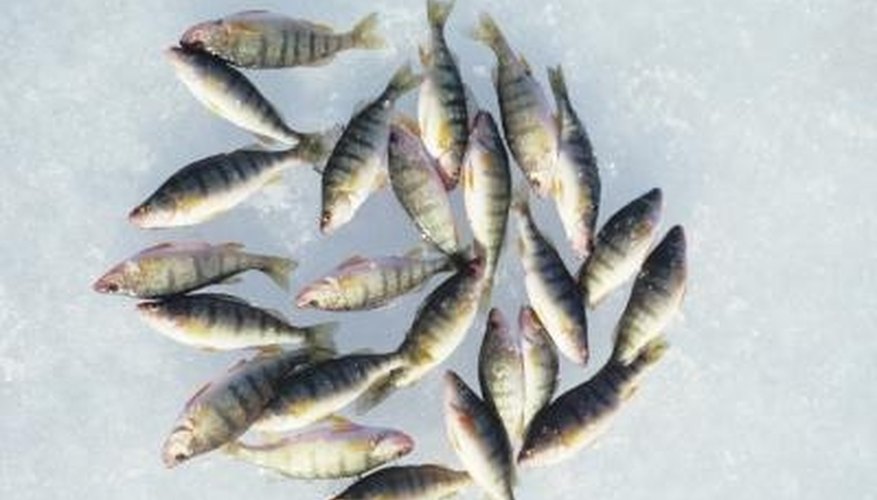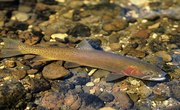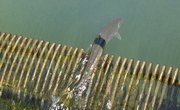
Perch and crappie are both considered panfish, even though they are not closely related. They both have firm, flaky white meat and are considered excellent table fare. They even bite on the same bait and lures and share overpopulation issues that cause stunted populations of fish. However, these fish have their differences as well.
Body Shape
Crappie have a taller, more flattened body shape than yellow perch. A crappie also has large dorsal and anal fins. The dorsal and anal fins on a crappie start with six to eight spines depending on the species and end in a large rounded lobe. Crappie have one dorsal fin, while perch have two.
Yellow perch are longer and resemble a torpedo. The dorsal fin on a perch doesn't have spines. Larger yellow perch have a pronounced hump on their back. Smaller perch tend to be more streamlined.
Color
The upper body on crappies can have a slightly greenish color, depending on the water were the crappie lives. Overall, their bodies are silvery white with black stripes or flecks depending on the species. White crappies have distinct stripes; black crappies have spot and fleck marks over their back and sides.
Perch have greenish backs fading to yellow or orange and which then turns white on the stomach. They also have seven to eight dark green stripes running vertically down their sides. Perch have bright orange pectoral, pelvic and anal fins. The tail on a perch is greenish colored.
Spawning Habits
Both crappie and perch spawn in the spring, but their spawning habits are very different. Crappie usually spawn in 6 to 8 feet of water, but the depth can vary depending on the clarity of the water. Crappie prefer to spawn on clean, sandy bottoms. The males move into the spawning grounds first and scoop out a bowl-shaped nest on the bottom. The females move in to select a mate then lay their eggs in the nest. The male guards the nest until the eggs hatch and the fry can swim on their own.
Perch spawn earlier in the year and lay their eggs on weeds. The female scatters her eggs as the male fertilizes them, then the parents abandon the eggs. Perch don't care for their young.
Taxonomy
Crappie have their own genus, Pomoxis. White crappie are P. annularis, black crappie are P. nigromaculatus. The species are closely related and are grouped in the family Centrarchidae along with sunfish and the large mouth and small mouth bass. Yellow perch are Perca flavescens, and they are the only species in their genus. They are grouped in the family Percidae and are closely related to walleye and sauger.
References
- Maryland Fish Facts: Yellow Perch
- Texas Parks and Wildlife: Black Crappie (Pomoxis nigromaculatus)
- Texas Parks and Wildlife: White Crappie (Pomoxis annularis)
- "Panfish: The Complete Guide to Catching Sunfish, Crappies, White Bass and Yellow Perch"; Creative Publishing International; 1996



